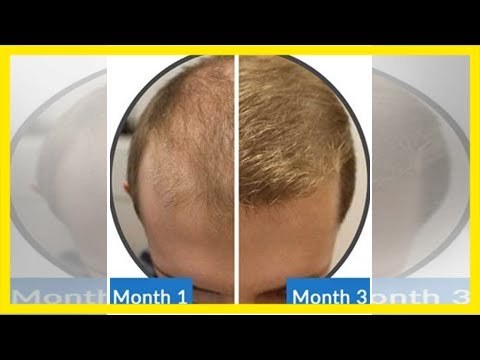This is being touted as a cure for baldness everywhere -
All of these articles and many more say it’s a “cure”, but no one explains whether or not humans have the same protein South Korean scientists found in MICE.
The protein is seen as significant because it apparently shuts off hair growth when it binds with a certain receptor in the follicles. The Korean scientists found a molecule that can inhibit this protein.
I really doubt this claim is applicable to humans. I wouldn’t write off the possibility 100%, because it is possible that DHT leads to a long chain of interrelated reactions in the Wnt pathway, that finally end up in the creation of this protein – which would make its inhibition applicable to humans.
HOWEVER, there is not one statement in any of this that this protein is created in balding HUMAN scalps. If I’m wrong about this, please, someone correct me!
So, this year alone we had three major investigational pathways announced that potentially could lead to cure. Or so they say.
I remind Tregs theory, Lactose and now this CXXC5.
Surely, every each of them can not be equally important.
And how does Cotsarelis PGD2 theory fit among those? Did these current discoveries debunk Cotsarelis PGD2 theory as the most important element along the chain? Otherwise, why would you want to spend more time digging into cells and proteins when all you have to do is neutralize PGD2?
I think I read that Cotsarelis’ PGD2 finding is most likely a dead end. Yes, in balding men, there is higher prostaglandin D2 synthase enzyme activity in the balding areas, and more PGD2 in those areas, but it turns out that the finding is just incidental and not the real cause of hair loss. It’s a side pathway which branches off the main pathway from DHT to Wnt (?) to stem cell activation/deactivation. So, yes – you do get more of this stuff, but this stuff is not what’s shutting down people’s HF stem cells and making them bald.
I’ll try to find the reference for the above explanation for you… Someone mentioned this in a discussion of lactate.
“The Wnt/β-catenin pathway has been implicated in hair follicle development and hair regeneration in adults. We discovered that CXXC-type zinc finger protein 5 (CXXC5) is a negative regulator of the Wnt/β-catenin pathway involved in hair regrowth and wound-induced hair follicle neogenesis via an interaction with Dishevelled. CXXC5 was upregulated in miniaturized hair follicles and arrector pili muscles in human balding scalps. The inhibitory effects of CXXC5 on alkaline phosphatase activity and cell proliferation were demonstrated using human hair follicle dermal papilla cells. Moreover, CXXC5−/− mice displayed accelerated hair regrowth, and treatment with valproic acid, a glycogen synthase kinase 3β inhibitor that activates the Wnt/β-catenin pathway, further induced hair regrowth in the CXXC5−/− mice. Disrupting the CXXC5-Dishevelled interaction with a competitor peptide activated the Wnt/β-catenin pathway and accelerated hair regrowth and wound-induced hair follicle neogenesis. Overall, these findings suggest that the CXXC5-Dishevelled interaction is a potential target for the treatment of hair loss.”
Thanks for that!
A “zinc finger protein”? Is this some kind of organometallic protein, chelated with a metal, the way hemoglobin contains iron?
It very much reminds me of PGD2 story. Both CXXC5 and PGD2 are “negative regulators” present in balding human scalp. Interestingly, they used valproic acid to inhibit CXXC5.
I think, people have already tried valproic acid and didn’t get any results.
I might be wrong but blocking this CXXC5 could turn out to be as fruitless as blocking PGD2.
It could be, but I think the difference between PGD2 and this is that, with PGD2, Cotsarelis found that it (and the enzyme that makes it) was found in much higher concentrations in balding areas of bald people’s scalps. But, I think they never actually found experimentally that blocking PDG2 leads to increased hair growth. So it was very strong circumstantial evidence, but no direct evidence.
On the other hand, it looks like they’re saying that CXXC5 actually leads to decreased hair growth – they’ve seen this experimentally. So it’s more than just circumstantial evidence, it’s direct evidence.
My question is, what did they do in that experiment? Did they actually expose non-balding people’s scalps to CXXC5? Or did they do some kind of in vitro experiment? Or was it just an incidental result of an experiment conducted for some other reason.
Any info on whether is it possible to get PTD-DBM?
Injections or creams?
Good question. I haven’t found whether it was injected or applied as topical?
They seem very confident. Ol George could produce hairs but they were all miniature hairs. Maybe this is the missing link? I would love to know how they are applying and how much
edited by Admin - forum violation
edited by Admin - forum violation
I’d like to see one treatment option become publicly available in the next two years. There has been so much talk of various success stories, such as this one, but nothing makes it to the marketplace. So I would be glad to have one drug, gene therapy, etc., finally break through for those of us in need.
How It Works?
Thank. And how do you neutralize PGD2 without increasing protein, or something I do not understand?
Wow another miracle cure tested on rodents with no firm future date doomed to be released to the public in 2050 awaiting an additional 20 years of FDA approval.

